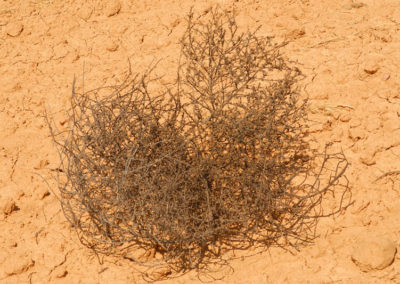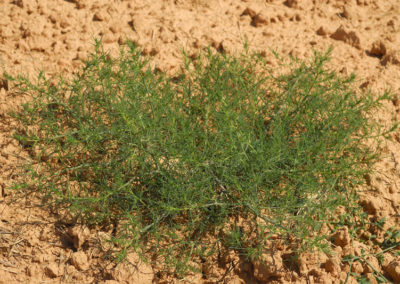
Russian Thistle

Pollen Type: Weed
Cross-Reactivity: Other Salsola Species
HS Allergy Extract: Russian Thistle
Family: Chenopodiaceae
Genus/Species: Salsola kali
Common Names: Russian Thistle, Tumbleweed, Saltwort
Distribution: Widespread throughout western and northern North America.
Locations: Dryer regions of the West and Midwest and to lesser extent in saline waste areas of the East coast.
Pollination Method: Wind-pollinated
Pollinating Period: June-September
Description: Russian Thistle is an annual herb that grows 1’-4’ tall. It was introduced to the United States in South Dakota via a shipment of flax seed from Russia in 1874 and then spread quickly throughout the country. Its intricately branched to form a dense tangle and usually grows in a sphere-like shape. Leaves are small (¼”), linear, and spine-tipped. Flowers are simple, small, and difficult to see, and occur throughout the plant. In the fall, the individual plant dries and breaks off at the root. Because of their sphere-like shape, winds roll the plant over long distances of open land scattering the seed for future growth. This is why the Russian Thistle is often called tumbleweed. Large accumulations of these dried plants are observed in fence corners or other obstructions.
Photo Gallery:



